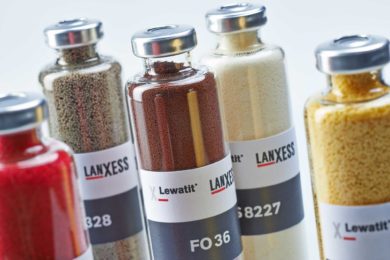Ion Exchange Resins Market –Global Analysis of Market Size, Share & Trends for 2019 – 2020 and Forecasts to 2030 is anticipated to reach USD 3.16 billion by 2030. According to this report, the extensive expansion, combined with increased healthcare spending in the biomedical sector, should add to the demand for ion exchange resin products. The first successful application was the hydraulic clutch made of nitinol in military aircraft. Other applications such as bras, thermal and electrical actuators, and orthodontic arches have also seen remarkable growth in recent years. In addition, increasing demand for consumer electronics such as coffee makers, ovens, air conditioners, and refrigerators is expected to fuel growth in the Ion Exchange Resins Market.
The market report on Ion Exchange Resins Market includes in-depth insights as:
- The estimated value of the market was USD 1.80 billion in the year 2020.
- Ion Exchange Resins in Asia Pacific held the largest market share in the year 2020.
- Based on Type, Cationic Resins emerged as a key segment in the Ion Exchange Resins market.
- Based on the End-Use Industry, Power emerged as a key segment in the Ion Exchange Resins market.
- Key players are likely to focus on product innovations and expansion through mergers to retain their positions in developed markets.
“The Ion Exchange Resins Market has seen lucrative growth due to primary factors such as the increasing use of ion exchange resins in end-use industries such as the shoe and textile industries. Aesthetically pleasing leather shoes and improved manufacture of leather shoes have increased the use of ion exchange resins such as systems, polymers, dyeing aids, and fatliquoring agents. Ion exchange resins offer properties such as improved dimensional stability, softness, and tack and fuel their worldwide demand. Other applications of ion exchange resins such as chromium sulfate, formic acid, sodium bicarbonate, and degreasers are gaining in importance due to the increased use of these chemicals for pH neutralization, pH lowering in chrome plating and the adhesion of dye products to leather are driving the rapid growth of the Ion Exchange Resins Market”, according to this report
Ion exchange resins are a class of products used in the treatment of animal hides to make leather. Ion exchange resins are needed at various stages of leather processing, including burr, tanning and finishing, fatliquoring and waterproofing agents, and drum dyeing. They are often defined as alloys that return to their original shape when deformed. These alloys are lightweight and provide alternatives to traditional actuators such as pneumatic, hydraulic, and motor-based systems. Potential uses of ion exchange resins as actuators have expanded the spectrum of other ion exchange resins, including copper-magnesium, iron-manganese-silicon, and copper-aluminum-nickel -Alloys. Ion exchange resins have two stable phases: the high-temperature phase called austenite and therefore the low-temperature phase called martensite, the first is symmetrical while the second is less symmetrical. The phase change takes place mechanically or thermally.
The Ion Exchange Resins Market is segmented by Type into Cationic Resins, Anionic Resins. The Cationic Resins segment had the majority of the ion exchange resins market and is expected to continue its dominance over the forecast period. Cationic resins are used in a wide variety of end-use industries for descaling, treating high-salt water, and demineralizing in APAC has resulted in increased demand for cationic resins for water treatment applications. With the progress of the APAC countries, the Middle East and Africa, South America, and other regions, it is expected that the demand for ion exchange resins in various industries will increase.
Key Players in the Market
- Some of the key players operating in the Ion Exchange Resins Market are The Dow Chemical Company, Lanxess AG, Purolite Corporation, Mitsubishi Chemical Corporation, Thermax Limited, Ion Exchange (India) Ltd., Novasep Holding SAS, Samyang Corporation, ResinTech Inc, Anhui Sanxing Resin Technology Co. Ltd.
Get Valuable Insights into Ion Exchange Resins Market.
In the new report, CRI Report thrives to present an unbiased analysis of the Ion Exchange Resins Market that covers the historical demand data as well as the forecast figures for the period, i.e., 2021-2030. The study includes compelling insights into growth that is witnessed in the market. Ion Exchange Resins market is segmented By Type into Cationic Resins, Anionic Resins; By Application into Water, Non-Water; By End-Use Industry into Power, Chemical & Petrochemical, Pharmaceutical, Food & Beverage Geographically, the market is segmented into North America, Latin America, Europe, Asia Pacific and Middle East and Africa.

